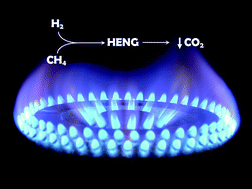
Solargy Innovation’s R&D and practical experience spans a wide variety of technologies including:
- Hydrogen Enrichment
- Green Methanol
- Horizontal Axis Wind Turbines (HAWT)
- On-grid and Off-Grid Solar
- Super Capacitors
- Hybrid Battery Systems
- Micro Turbines, and
- Flywheel Energy Storage
Whilst all these technologies look promising in the longer term most of them are unlikely to produce the quantum reductions in greenhouse gas emissions that will be required in the short term if we’re to avoid the catastrophic effects of global Climate Change.
Thus, to ensure our clients and associates achieve a fast and effective return on investment Solargy is focusing on just two of the technologies listed above:
- Super Capacitors designed specifically for bulk Energy Storage applications, and
- Ultra-High strength building materials which also feature low cost, ease of manufacture and an ultra low embedded Carbon footprint.
Super Capacitors
Apart from their high cost, commercially available super capacitors (sometimes called Ultra Capacitors) have a number of limitations which make them unsuited to both short and long term energy storage applications.
One of their most significant limitations is their relatively low working voltage (typically less than 5 volts per cell).
Solargy’s breakthrough SuperCap technology raises the working voltage to around 800 volts DC, thus making it possible to connect them directly to strings of solar panels for both domestic and grid-scale applications.
In this “directly connected” mode of operation the excess solar energy produced by the panels during the day is stored in the Solargy SuperCaps and is released when the sun goes down. In short, the user experience is much like having solar power available at night.
Ultra-High Strength Building Materials
The 1995 development of the IsoTrusstm, a particularly rigid and lightweight structural beam, by civil engineering professor David Jensen on behalf of Francom and NASA has opened the doors for a new class of building materials that are amazingly strong (approx. 12x the strength of the equivalent weight of steel), lightweight and with amazingly low embedded Carbon footprints.
Solargy continues to develop and enhance the design goals inherent in the IsoTrusstm to create a new range of materials including both structural members and sheet materials.
These materials all exhibit high strength, low mass, low cost, are fast to install and, perhaps most importantly, have exceptionally low embedded Carbon footprints.
Hydrogen Enrichment
Solargy’s areas of expertise and research includes Hydrogen Enrichment; a specialised application of green Hydrogen that has great potential for reducing global emissions in the near term.
Hydrogen Enrichment of Natural Gas (or HENG) is currently being trialed in Australia, the UK and elsewhere on domestic gas supplies. However Hydrogen Enrichment is also applicable to liquid fuels such as petrol and diesel, as well as solid fuels such as coal.
Simple school chemistry taught us that when a hydrocarbon fuel such as Methane gas (CH4) is fully combusted in the presence of atmospheric Oxygen (O2) the products are water vapor (H2O) and Carbon Dioxide (CO2), as illustrated in the molecular representation diagram (right). The reaction is exothermic, meaning it releases more heat than it consumes.
The actual science of hydrocarbon combustion is considerably more complex than what school chemistry and physics would suggest however Solargy continues to expand this field of applied knowledge through practical and theoretical research.


Solargy has already demonstrated in numerous field trials the many benefits of Hydrogen Enrichment technology, including:
- Significant reductions in hydrocarbon fuel consumption
- Increased efficiency of combustion, due in part to faster flame propagation rates
- Increased energy output due to more complete combustion
- Reduced emissions of waste products
- Near complete elimination of greenhouse Nitrous Oxide (NOx) emissions
- Significant reduction in toxic, gaseous Sulpher emissions
